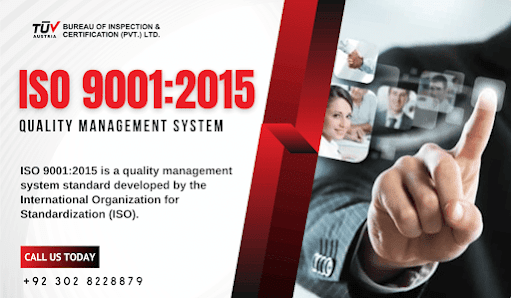ISO Certification 9001:2015 is among the most sought-after certifications by businesses across various industries.
Implementing a quality management system is the main goals of ISO 9001:2015 certification. Many businesses consider this an opportunity to improve their operations and the quality of their products.
1. Quality Management System
QMS certification is a guideline for creating a strong Quality Management System (QMS). The Quality Manual outlines the best practices and steps a company should follow to attain uniformity in service and product quality.
The ISO 9001 certification process could meet the expectations of the business, that range from customer satisfaction to branding reputation for generating profit.
2. Employee Training
Training employees is crucial to the certification process since employees must be aware of changes in business processes and operations.
To the specific job role and the job duties, the standard for
quality management and guidelines for certification must be explained to employees.
3. Implementation Of QMS
The current business operations must align with thehighest quality standards for an organization to obtain certification in ISO 9001.
ISO Consultants will provide methods for implementation and
the necessary corrective actions. The system will be implemented
within the organization with approval by the top management and the
business departments.
4. Internal Audits and Certification
The final step of the certification process is an internal audit, in which an internal auditor will be required to review the QMS (QMS). Therefore, the certification body will audit before granting the ISO certification.
Consultants play a significant part in achieving the certification and implementation procedures. A seasoned ISO consultant can guide you in the entire certification procedure, perform an internal audit, collaborate with the certification body to conduct the final Audit, and assist you with obtaining the certification.
5 Steps For ISO 9001 Certification
Implementing ISO 9001:2015 standard seamlessly is a
five-step process followed by your consultant, who will assist you in achieving
a high-quality certificate within the shortest timeframe possible.
1. Gap Analysis
The consultant will conduct a gap assessment to determine the differences between current business processes and the recommended practices outlined in ISO. ISO 9001:2015 standard. The necessary corrective actions and process enhancements will be identified, along with the necessary changes that must be implemented and incorporated into the quality management systems (QMS) to be implemented within the company.
2. Quality
Manual Documentation
The Quality Manual must contain information about the workflow and operational procedures of the business. The suggested corrective actions, quality policies, and operational improvement must be documented.
This Quality Manual will aid the employees in taking the desired actions to ensure quality is maintained within the company at all times.
3. Implementation of The Quality Management System
After completing the quality manual and the required corrective actions, the company must make modifications. In this stage, employee involvement is vital only if continual improvement is implemented and employees embrace best practices will the ISO 9001 certificate
and
Quality Management system (QMS) provides the expected results.
4. Internal Audit
After you have the Quality Management System (QMS) in place, top management, employees, and the ISO consultant should examine the business process operation, perform an internal audit and create the reports.
The reports and manuals must be provided to the external a certification authority, which will examine this process and then issue an ISO certification.
5. Certification
The final stage is to issue the certificate. After the certification body has conducted the Audit and examined the Quality Management System (QMS), The document will be released once the results of the Audit are recognized as valid.
Its ISO
9001 certificate is valid for three years and dependent
on a yearly audit. The Certification Body will conduct annual inspections
to verify that the company complies with the standard's specifications.
How Will Tuv Austria BIC Assist You in The ISO 9001 Certification Process?
Our ISO consultants will give you the most current, most effective
practices in quality control standards.
We'll
guide you in implementing ISO 9001 and conduct internal
audits to identify corrective measures.
Tuv Austria Bureau of Inspection & Certification Pakistan also works internationally Accredited
ISO Certification Bodies to issue your ISO certificate. Our certification
is 100% ISO-compliant practices and implementation methods at an affordable
price and within the shortest time.
.png)

.png)
.png)


.png)


.png)



